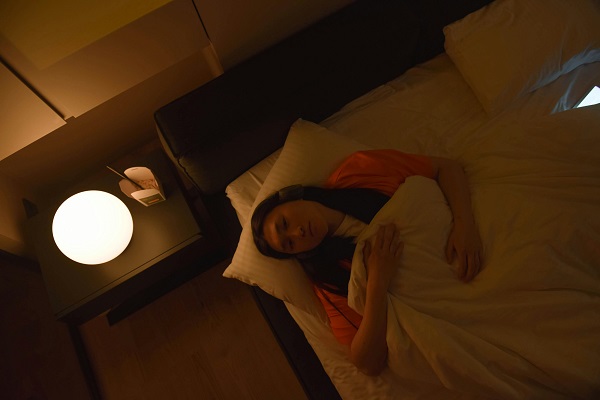I can tell you as someone who was diagnosed with PMR and fibro, most PMR info on the internet isn’t all that accurate. PMR usually affects elderly women, but it’s not so rare for younger folks to have it. And, most who are below the age cut off aren’t even given the blood tests needed to confirm the diagnosis because doctors just think it’s impossible to have PMR at 30, 40, 50 years of age.
I was 54 when I woke one morning thinking I must have the flu due to the unexplained pain and stiffness in my body. Over the course of two weeks, I had two primary care visits, pretty large doses of pain meds, increasingly painful stiffness that lasted until 2 or 3 p.m., severe sleep deprivation, rapid weight loss.
I thought my normally attentive primary care dr might have a cruel streak in her when she denied prescribing me steroids (I was desperate for relief) even for just 2 or 3 days until my appointment with the rheumatologist arrived. She explained it could mess up important blood work the rheumy would likely need.
By the time I saw the rheumatologist (just 2 weeks from the onset of symptoms), I could not dress my upper body, wash my hair, or brush my hair because of the pain and extreme lack of mobility in my shoulders, upper arms, and neck. I couldn’t drive because I could not turn the steering wheel or press on the brake hard enough to stop it from moving.
I couldn’t turn my head to look to the side let alone behind me to back up. I literally performed an off-balance hobble to the bathroom when needed, and spent the rest of my time in a recliner. It was the least painful thing I could do to help myself. I could barely hold a fork or spoon let alone cut any food.
My lower body was crippled by horrible pain and unbelievable stiffness. Feet, ankles, knees, hips are all affected. This was sheer hell. Every single day my condition worsened exponentially. My first time in a wheelchair was my first appointment with a wonderful rheumatologist. I needed help getting out of the wheelchair and into the SUV to go home because I couldn’t rise without falling back to the wheelchair seat.
Click here to Get this or Visit Fibromyalgia Store
I went into all that because when I googled my symptoms, PMR was often a result but I didn’t think it was that because the information didn’t even touch on the severity, that it could be completely disabling within just a few days time, or the widespread symptoms outside of the upper body morning stiffness. No way did those symptoms cover what I was experiencing!
Upon diagnosis, I started a prednisone regimen and found a couple of PMR groups on Facebook. When I read thru the posts of the first group, I did it through heavily flowing tears and frequent nose-blowing breaks. I scrolled and read all night long. THESE PEOPLE WERE DESCRIBING MY EXPERIENCE!!! I truly felt 100% alone in this outside of my rheumy understanding what was happening and assuring me I’d get better.
Nothing in print truly confirmed my symptoms. When you are at a pain level of 8 to 10 every single moment of every single day, when the 30-minute increments of sleep you manage a few times a night end with the sound of yourself moaning in pain loud enough to wake you, when you’re hypersensitive to light, sound, motion, touch, and the best-printed info you can find makes it sound like you have some aches and pains in the morning, you feel A.L.O.N.E.
It was in the FB groups where I learned that the severity of symptoms and problems simply getting yourself to the toilet to pee was the norm. Countless people younger than me had PMR. Countless people suffered for months, got addicted to pain meds (which do not help PMR, by the way), were brushed off by doctors as complainers or drug seekers, never even received referrals to rheumatology! It’s a fairly rare condition but frequently misdiagnosed or undiagnosed, and not treated properly.
Bloodwork alone doesn’t 100% confirm PMR. But, bloodwork combined with improvement with prednisone is confirmation. Unfortunately, so many in the FB groups have struggled for years–even decades–because we are individuals who respond differently to the same treatments.
Prednisone is the cure (although some have achieved success with an anti-inflammatory diet & lifestyle change). No amount of pain meds will help. I know. I was on heavy doses for 2 weeks.
I was fortunate to start low-dose pred, increasing dosage until I was able to function. Stayed on that dose for a couple of months & tapered down (which was scary because each small decrease in dosage brought on flares for a few days) over the course of a few months. I’ve had a few flare-ups since, but the bloodwork was borderline, so I chose to wait it out & I was lucky enough that the flare-ups passed on their own.
When my rheumy diagnosed the PMR, he said he thought there was something else going on too but he wanted to get the PMR under control first. It was later that he was diagnosed the fibro. Fibro is a bitch. I hate it. It’s unpredictable & the brain fog not only makes you feel like you’re losing your senses, I think it can actually make you crazy at times.
It’s a struggle to mentally and emotionally deal with the daily pains & bouts of extreme fatigue, and flare-ups that can leave you bedridden, but it’s the unpredictability, the making plans and doing everything possible to be prepared to keep your plans or commitments, and not knowing until the time comes if you’ll be able to do it….and if you are, how long will you last?
The two conditions are similar in that they push the limits of pain & fatigue, but they are very different, at least for me, in how adversely they affected my life. I’m one of the lucky PMR-ers because my length of treatment fell within the parameters of most descriptions, and my steroid dosage was in the middle range too.
As much as I hate fibro, I’d choose it over PMR if I had to choose one or the other. Unless there’s a guarantee PMR will be treated with success in getting off prednisone, I’d choose fibro cuz I wouldn’t stick it out for years and years with PMR pain, or OMR pain-free but stuck on prednisone forever.
So, if anyone had the patience to sit thru my ramblings, I hope you felt you gained some helpful insight. My intent was to inform readers that most material describing PMR (including that handed out by doctors) makes it sound like a Club Med experience compared to the living hell it really is.
If you suspect you may have it, insist on seeing a rheumatologist for the best chance of successful treatment. Successful means little to no pain and steroid-free! This turned out to be therapeutic for me and I’ve never discussed my experience like this with anyone–ever!

Click Here to Visit the Store and find Much More….
For More Information Related to Fibromyalgia Visit below sites:
References:
Fibromyalgia Contact Us Directly
Click here to Contact us Directly on Inbox
Official Fibromyalgia Blogs
Click here to Get the latest Chronic illness Updates
Fibromyalgia Stores









